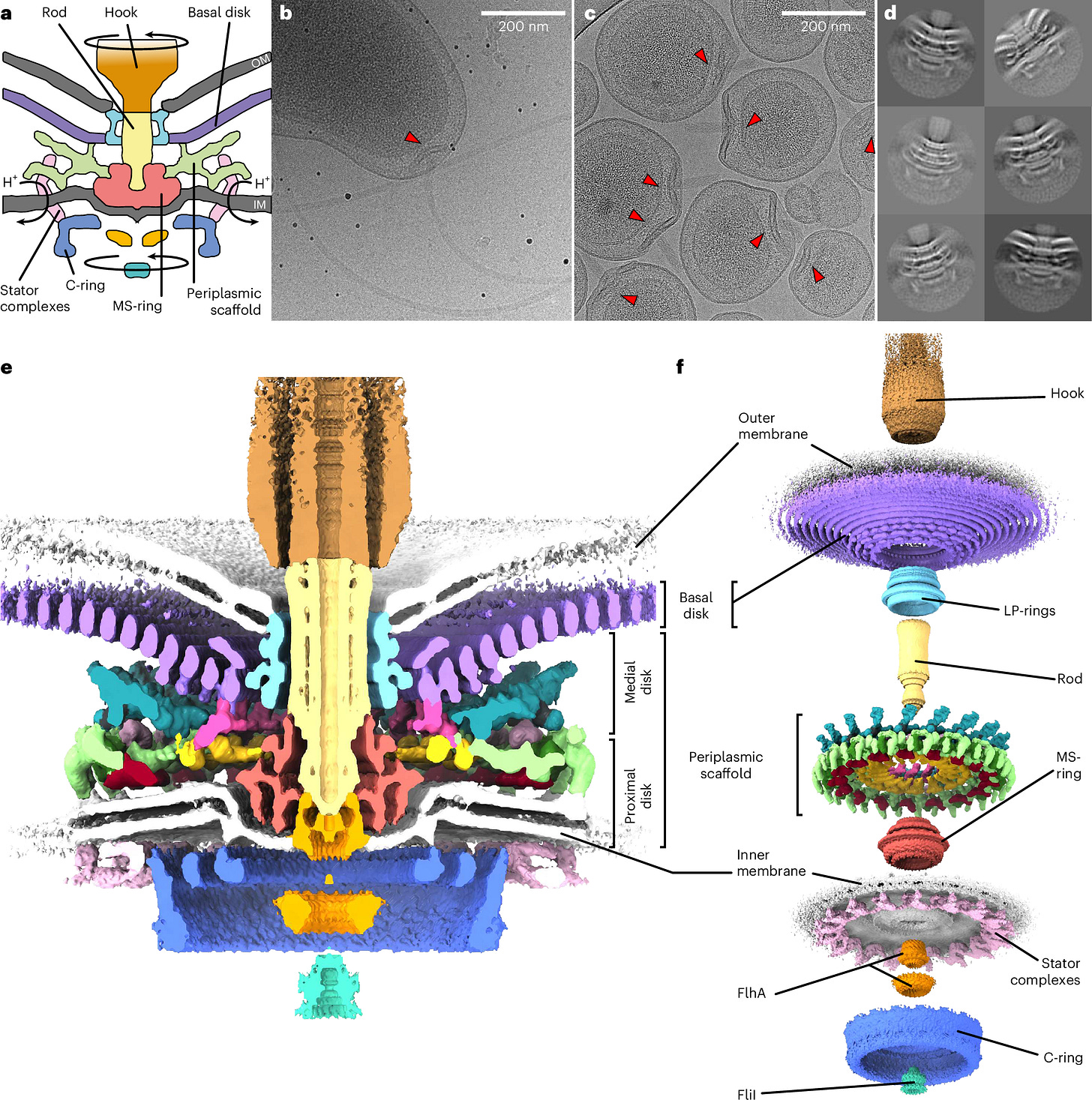Weekly Links #6
DNA to track supply chains. Subnanometer structure of the bacterial flagellar motor. First full genome from an ancient Egyptian.
Skepticism about virtual cells. Negative criticism is stupid, in part, because the first version of everything is fairly bad, and also AlphaFold2 came out and won CASP 26 years after the competition first began. Technology development takes time.
Speaking of CASP: they may run out of money, as the NIH is offering “no reassurance” about their $800,000 grant application.
Reconstitution of a complete set of tRNAs leads to “sustained, steady-state protein expression” in vitro.
A new “fuzzy sequencing” method that outperforms other technologies “in terms of information efficiency.”
Using DNA to track items in supply chains (from Microsoft Research).
In situ structure of the bacterial flagellar motor. Must read.
Being too ambitious is a clever form of self-sabotage (h/t Lada Nuzhna)
New databases aim to connect individual molecules to particular scents.
First human genome sequence from ancient Egypt; 4800 years old.
“…intraspecies warfare presents a significant barrier to strain coexistence in the human skin microbiome.” Cool dataset; they tested 14,884 pairwise interactions between different skin microbes.
We are still learning “basic” things about how plants work, like how plants figure out they have been injured by sensing ethylene molecules.
Rhodopsins taken from microbes living in cold environments are sensors for UV irradiation. Cool.
Using a protein language model to find new PETases, or enzymes that can eat plastic.
“In the late 1980s, many thought the fight against tuberculosis (TB) had been won. A disease that had plagued humans for at least 9000 years was on the path to being eliminated. The world knew what caused it, how to screen for it, and finally had effective antibiotics to treat it.” But its eradication never happened.
A lichen can withstand insane UV-C radiation’ 20-times the level found on Mars. “After 3 months [of exposure]—likely the highest amount of UV-C radiation ever tested on an organism—Singh pulled the sample so he could finish his master’s thesis in time. About half of the lichen’s algal cells had survived. Then, when Singh and Sun ground up and cultured part of the surviving lichen, about half of its algal cells sprouted new, green colonies after 2 weeks, showing it maintained the ability to reproduce.”
AI imaging tools are being used to find healthy sperms for in vitro fertilization.
Chinese pharma companies are making their own weight-loss drugs.


